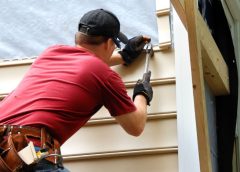For many, being a homeowner is part of the American dream. But once you are responsible for maintaining your property, it’s important to replace and repair damaged components of your home promptly.
Putting off fixing up your home can lead to expensive damage and an overwhelming to-do list. Read on to learn four common home repairs you shouldn’t ignore.
1. Plumbing Problems
Obvious plumbing problems demand intervention. If you have a plumbing problem that seems benign, you might be tempted to do nothing about it. But what appears to be a simple clog in one part of your home might indicate a serious, system-wide problem.
Sometimes, substantial plumbing problems don’t raise any alarms. With that, one of the most important reasons to replace a water main is to switch out dangerous old lead pipes for safer materials. Copper water mains are antimicrobial and nontoxic, lowering the risk of illness.
2. Old or Damaged Roofing
You should replace your roof within the interval the manufacturer recommends. If your roof sustains damage, such as from tree branches or adverse weather, you might need to fix specific spots or perform larger replacements.
A dated or damaged roof can deteriorate and increase the chance of leaks and severe water damage. A roof in poor condition can also make your home exterior look unkempt.
3. Foundation Issues
Another common home repair you shouldn’t ignore is a faulty foundation. A stable foundation anchors your home securely, but a damaged foundation can wreak havoc.
Typical signs of foundation problems include cracked drywall and floors, gaps between exterior windows and walls, sticking doors, and cabinets and counters separating from the wall. Repairing your foundation will prevent further structural damage.
4. Peeling Caulk and Paint
Caulk and paint do more than make your walls look crisp and fresh; these components protect walls from water damage. And just like the other examples in this list, the longer you wait to address the issue, the more extensive the damage to your home.
Check the caulk and paint on the interior and exterior of your home. Pay special attention to bathrooms since these rooms get very humid and moist. Signs of water damage can include moldy grout and caulk, tiles moving when you apply pressure, bulging tiles, and stains on the walls and floor outside the tub or shower.





